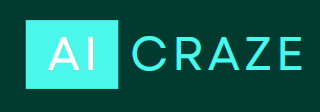
Blockchain technology has revolutionized the way we transfer, store, and manage data. While blockchain was initially designed for digital currencies such as Bitcoin, it has now found numerous applications in other industries as well. Two types of blockchains that have gained significant popularity are public and private blockchains. In this article, we will explore the public blockchain, its characteristics, advantages, disadvantages, and its use cases.
What is a Public Blockchain?
A public blockchain is a decentralized and open network that is accessible to anyone who wants to participate in it. It is a permissionless network where anyone can join and contribute to the network by validating transactions and adding blocks to the chain. In a public blockchain, all the transactions and data are stored on the chain, and the network operates through a consensus mechanism, where the participants reach an agreement on the validity of transactions.
Characteristics of Public Blockchain
Public blockchains have the following characteristics:
- Decentralized
Public blockchains are decentralized, which means that there is no central authority or entity controlling the network. The network is run by a community of participants who validate transactions and add them to the blockchain.
- Open
Public blockchains are open to anyone who wants to participate in the network. There are no restrictions or permission required to join the network, and anyone can contribute to the network by validating transactions.
- Transparent
Public blockchains are transparent, which means that all the transactions and data stored on the chain are visible to everyone on the network. This ensures that the network operates in a transparent and trustworthy manner.
- Immutable
Public blockchains are immutable, which means that once the individual adds a transaction to the chain, it cannot alter or delete. This ensures that the network maintains its integrity and is free from fraud and corruption.
- Secure
Public blockchains are secure, which means that the network is protected from unauthorized access and malicious attacks. The network uses advanced cryptographic algorithms to ensure that the transactions are secure and tamper-proof.
Advantages of Public Blockchain
Public blockchains have the following advantages:
- Decentralization
Public blockchains are decentralized, which means that there is no central authority or entity controlling the network. This ensures that the network operates in a trustless and transparent manner.
- Openness
Public blockchains are open to anyone who wants to participate in the network. This ensures that the network operates in a democratic and inclusive manner.
- Transparency
Public blockchains are transparent, which means that all the transactions and data stored on the chain are visible to everyone on the network. This ensures that the network operates in a trustworthy and accountable manner.
- Immutability
Public blockchains are immutable, which means that once the individual adds a transaction to the chain, it cannot alter or delete. This ensures that the network maintains its integrity and is free from fraud and corruption.
Disadvantages of Public Blockchain
Public blockchains have the following disadvantages:
- Scalability
Public blockchains are not very scalable, which means that they can handle only a limited number of transactions per second. This can result in slower transaction times and higher transaction fees.
- Security
Public blockchains are susceptible to 51% of attacks, where a group of participants control the majority of the network’s computing power and can manipulate the network.
- Governance
Public blockchains lack a formal governance structure, which can make it difficult to make decisions and implement changes to the network.
Use Cases of Public Blockchain
Public blockchains are best suited for the following use cases:
- Cryptocurrencies
Users use Public blockchains commonly for cryptocurrencies such as Bitcoin and Ethereum, where the network operates in a decentralized and transparent manner.
- Decentralized Applications (dApps)
We can use Public blockchains for developing decentralized applications, where the application runs on the network and operates in a trustless and transparent manner.
- Supply Chain Management
People also use Public blockchains for supply chain management, where the network can track the movement of goods and ensure their authenticity and quality.
- Voting Systems
Governments can also use Public blockchains for secure and transparent voting systems, where they can independently verify results and the integrity of the system will maintain.
- Digital Identity Management
Individuals can use Public blockchains for digital identity management, where individuals can store their personal data and control who has access to it.
- Content Sharing and Copyright Protection
People can also use Public blockchains for content sharing and copyright protection. Where the ownership and authenticity of digital content can be verified and protected.
- Charity and Donation Management
Individuals can use Public blockchains for charity and donation management. Where the individual can ensure transparency and accountability of the donations and can track funds from their source to their end users.
- Energy Trading
Individuals can also use Public blockchains for energy trading, where the network can track the production and consumption of energy. And also facilitate peer-to-peer trading of energy without the need for intermediaries.
- Gaming
Creators also use Public blockchains for gaming, where the network can facilitate secure and transparent transactions of in-game assets and currencies.

